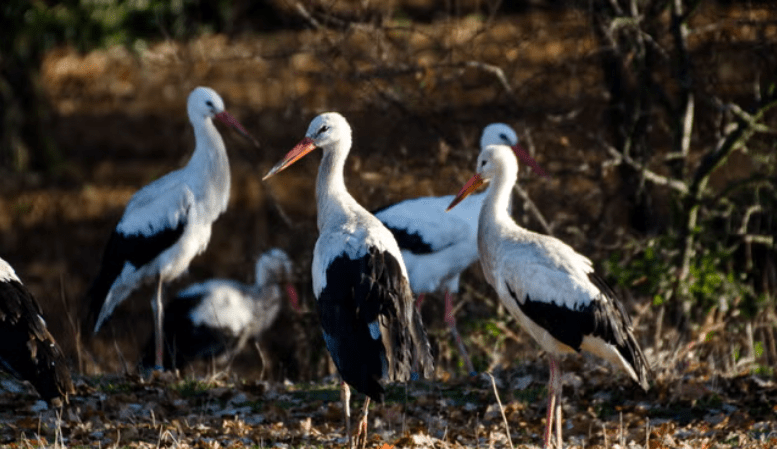The white stork, once a familiar sight across Britain’s rooftops and treetops, is making a dramatic comeback.
Once lost to history due to hunting and habitat destruction, this iconic bird is now the face of an ambitious white stork reintroduction UK project—hailed by conservationists as a beacon for wider ecological recovery.
White Stork Reintroduction UK: A Symbol of Nature’s Revival
The species’ return isn’t by accident. In 2016, a conservation initiative took root in southern England to re-establish a breeding population. The strategy? Introduce injured and rehabilitated birds to encourage wild nesting and spark a self-sustaining colony.
“We all see the white stork as a big charismatic species, but what it really is, is an emblem for nature recovery,” said White Stork Project Officer, Laura Vaughan-Hirsch.
Key project sites include:
- Knepp Estate in West Sussex
- Wadhurst Park in East Sussex
- Cotswold Wildlife Park, where breeding pairs are cared for
Birds from the Warsaw Zoo in Poland—some non-flyers—were pivotal in forming initial colonies. These birds, housed in secure pens, began reproducing, with their offspring venturing into the wild.
Knepp, once farmland, has undergone two decades of rewilding, now teeming with biodiversity:
- Grazing longhorn cattle, deer, and pigs manages the land naturally
- Rivers restored to their natural paths
- Wetlands shaped by beavers, home to dragonflies, damselflies and aquatic insects
It’s in this rich habitat that the white storks thrive. With mixed environments—wetlands, grasslands, woodland, and ancient trees—they find perfect conditions for nesting and feeding.
The project bore fruit quickly:
- 2020: First chicks hatched in treetop nests
- 2023: Non-flyers raised young in ground nests
- 2025: Around 40 fledglings expected
“They love mixed habitats, grasslands, woodlands and lovely big trees to nest in, anything that’s insect-rich, worm-rich,” said Vaughan-Hirsch.
Some birds have even migrated to Africa and returned, now raising chicks in their birth colonies—a major milestone proving the success of the reintroduction effort.
Beyond the storks themselves, their return is influencing local ecosystems in unexpected ways. Their enormous nests, some weighing nearly a tonne, host:
- Blue tits
- Wrens
- House sparrows
- Collared doves
“What we are seeing is that even species that don’t have a reputation as being keystone species have an effect on ecosystems,” said Isabella Tree, co-owner of Knepp.
With each chick consuming up to 35kg of insects like worms and crickets before fledging, their diet acts as a natural health check for the environment.
The project had its sceptics. Conservationists initially doubted whether the white stork could ever call Britain home again.
“The absolute joy and excitement is that they are now flying to Morocco on migration and coming back and nesting and having chicks and interacting with wild birds and bringing wild birds back with them as pairs,” said Tree.
The storks are more than just birds. They’re becoming cultural and ecological ambassadors—”totems” for habitat restoration, and a powerful connection between people and the natural world.
Reintroduction projects are expanding, with new efforts underway in Cornwall and Devon. The hope is that, soon, white storks will begin nesting far beyond Knepp and Sussex, reclaiming their place across the British countryside.
And with them, a message soars—restore the land, and nature will find its way home.






